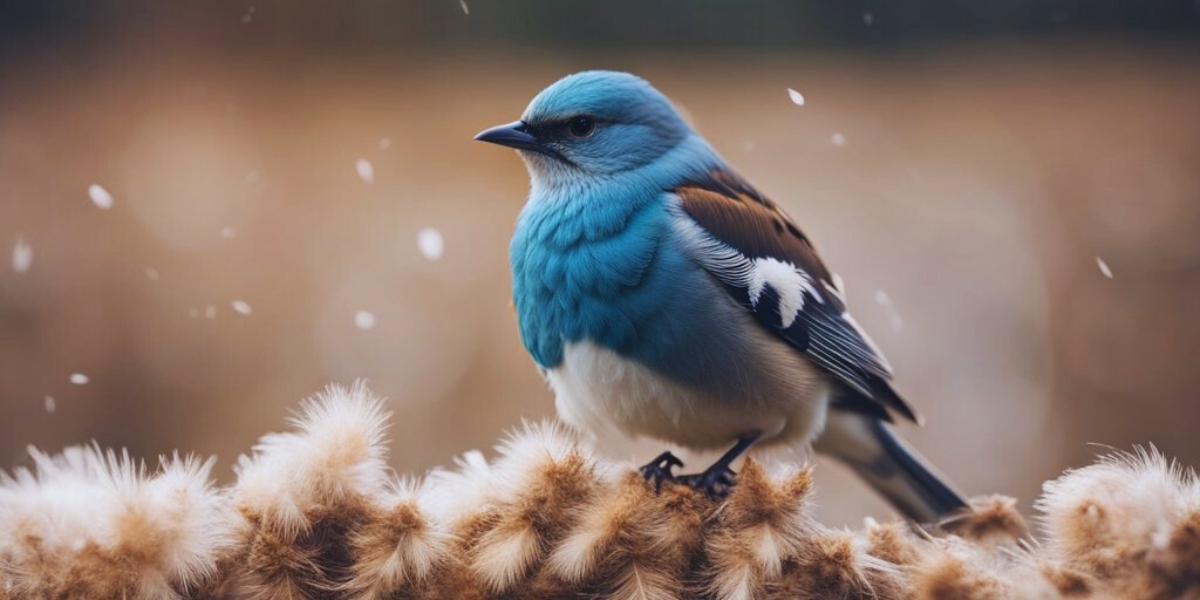Surviving the winter is a remarkable feat for birds, given the harsh conditions they must endure. From bitter cold and snowstorms to limited food resources, winter presents a formidable challenge to these feathered creatures. Yet, birds have evolved remarkable strategies and adaptations that enable them to not only survive but also thrive in the coldest months. Join us on an exploration of how birds endure the winter’s icy grip.
Understanding Bird Physiology
To comprehend how birds survive winter, we must first delve into their unique physiology. Birds possess several key adaptations that aid their survival in cold environments:
How Birds Keep Warm
Birds have a higher metabolic rate than mammals, allowing them to generate more body heat. Their feathers, composed of interlocking barbs, create a layer of insulation that traps warm air close to the body. Additionally, birds fluff up their feathers to create a thicker insulating layer when temperatures drop.
How Birds Find Food in Winter
During the winter, food availability decreases significantly, posing a significant challenge for birds. To overcome this, they employ various strategies:
- Some birds migrate to warmer climates where food is more abundant.
- Others adapt their diet to include a wider range of food sources, such as seeds, berries, insects, and even tree bark.
- Some species, like woodpeckers and chickadees, store food during the summer and autumn to sustain themselves during the winter months.
How Birds Adapt Their Behavior
In response to the challenges of winter, birds modify their behavior to increase their chances of survival.
- They often form flocks, which provide warmth and protection from predators.
- Birds may also seek shelter in trees, under eaves, or even inside human-made structures like birdhouses.
- Some species reduce their activity levels to conserve energy during the coldest periods.
Strategies for Avian Survival
Beyond physiological adaptations, birds employ a range of strategies to survive the winter:
Migration
Migration is perhaps the most well-known strategy for winter survival. Millions of birds undertake epic journeys to escape the harsh conditions of their breeding grounds and seek refuge in warmer climates. This remarkable feat requires precise navigation, endurance, and the ability to find suitable stopover sites along the way.
Hibernation
Some bird species, such as hummingbirds and certain types of swifts, enter a state of torpor, similar to hibernation, during the winter. During torpor, their body temperature drops, their breathing and heart rate slow down, and they conserve energy by entering a deep sleep.
Foraging and Food Caching
Birds that remain on their breeding grounds during the winter must adapt their foraging strategies to find food in a landscape covered in snow and ice. They may dig through snow to find buried seeds and insects, search for berries and fruits on trees and shrubs, or even glean food from human bird feeders. Some species, like jays and chickadees, cache food during the summer and autumn to sustain themselves during the winter months.
Building Nests and Shelters
To protect themselves from the cold and elements, birds construct nests and shelters that provide insulation and protection from the wind. These structures can be made from a variety of materials, such as twigs, leaves, moss, and feathers. Some birds, like wrens and chickadees, even build multiple nests, using them as temporary shelters during the cold winter nights.
Adaptations that Aid Survival
Birds possess a remarkable array of adaptations that help them survive the challenges of winter:
Physical Adaptations
Many birds have thick layers of feathers that provide excellent insulation.
Some species have specialized bills and feet adapted for foraging in snow and ice.
Others have long claws that help them grip branches and perch in icy conditions.
Behavioral Adaptations
Birds may huddle together in flocks to conserve body heat and protect each other from predators.
Some species migrate to warmer climates during the winter months.
Others enter a state of torpor, reducing their metabolic rate and conserving energy.
Physiological Adaptations
Birds have a high metabolic rate, allowing them to generate more body heat.
They also have efficient respiratory systems that allow them to extract oxygen from the cold, thin air.
Some species have specialized enzymes that help them digest and metabolize food more efficiently during the winter months.
Challenges Faced by Winter Birds
Despite their remarkable adaptations, birds still face several challenges during the winter months:
Food Scarcity
During the winter, food resources are often scarce, making it difficult for birds to find enough sustenance to survive. This is especially true for insectivorous birds, as insects are less active or dormant during the cold months.
Harsh Weather Conditions
Extreme cold, snowstorms, and icy conditions can pose life-threatening hazards to birds. Exposure to these elements can lead to hypothermia, frostbite, and even death.
Competition and Predation
During the winter, competition for food and nesting sites can be fierce among birds. Predators, such as hawks and owls, may also take advantage of the reduced mobility and activity of birds during the winter months.
Conservation Efforts to Protect Winter Birds
To help birds survive the winter and protect their populations, conservation efforts are underway:
Habitat Preservation
Preserving and restoring natural habitats provides birds with essential food and shelter resources during the winter months.
Bird-Friendly Practices
Encouraging bird-friendly practices, such as putting up bird feeders and birdhouses, can provide birds with supplemental food and shelter during the winter.
Education and Awareness
Raising awareness about the challenges that birds face during the winter and promoting bird-friendly practices can help people take action to support bird populations.
People Also Read:
Conclusion: The Resilience of Birds in Winter
As we delve into the remarkable survival strategies of birds during the winter, we are humbled by their resilience and adaptability. From physiological adaptations to behavioral changes and strategic resourcefulness, birds demonstrate an unwavering will to survive, even in the harshest conditions. Their ability to endure and thrive in the face of adversity serves as an inspiration to us all, reminding us of the incredible diversity and resilience of life on Earth.
Frequently Asked Questions
Q: How do birds survive extreme cold temperatures?
A: Birds have evolved specialized adaptations, including feather insulation and energy storage mechanisms, to endure the challenges of extreme cold.
Q: Are all bird species migratory during the winter?
A: No, not all birds migrate. Some species have adapted to winter conditions in their resident habitats, employing various survival strategies.
Q: How can individuals contribute to bird conservation?
A: Individuals can contribute by supporting wildlife preservation programs, creating bird-friendly environments, and raising awareness about the impact of human activities on bird habitats.
Q: What role do governments play in bird conservation?
A: Governments implement wildlife preservation programs, enact conservation laws, and support initiatives to protect bird species and their habitats.
Q: How does climate change affect birds during winter?
A: Climate change poses threats to bird habitats and food sources, impacting migration patterns and the availability of resources critical for winter survival.

